Padmasana: Health benefits, types, and How to do?
What is Padmasana?
Padmasana, which converts to “lotus pose” in Sanskrit, needs yogis to have open hips. This position can be categorized as a cross-legged yoga pose which allows us to deepen our meditation by calming our minds and helping relieve a ton of physical ailments.
This position includes a lot of grounding and energy and is symbolic of the lotus, which is rooted in the mud and then begins to bloom into a beautiful flower. In the same vein, when you first start to practice yoga, you too are rooted in the mud and have many worries but once you develop, you are capable of blooming like the lotus flower.
Regular practice of this posture helps in the overall blossoming of the practitioner, just like a lotus; and hence the name Padmasana. In Chinese and Tibetan Buddhism, the Lotus pose is also familiar with the Vajra position.
Lotus pose or Padmasana is a cross-legged sitting meditation position from ancient India, in which each foot is put on the opposite thigh. It is an ancient asana in yoga, predating hatha yoga, and is widely used for meditation in Hindu, Jain, Tantra, and Buddhist traditions.
Shiva, the meditating solitary God of Hinduism, Gautama Buddha, the creator of Buddhism, and the Tirthankaras in Jainism have been represented in the lotus position, especially in statues. The pose is symbolic of both Buddhist meditation and yoga, and as such has found a place in Western culture as a symbol of healthy living and well-being.
Which muscles are used during Padmasana?
The muscles used are :
Hip Flexors. These muscles cross over the anterior of your hip joint and flex the hip.
Adductors
Abductors
Hamstrings
External Rotators and Gluteus Maximus
What are the Health benefits of doing Padmasana?
The Padmasana pose comes with it several benefits, some of which have been observed below:
Increases digestion
This is because Padmasana yoga gives the abdominal part of the body a gentle massage, thereby boosting digestion. Furthermore, blood flow is redirected to the abdomen which increases the digestive system. Digestive problems like constipation are eradicated when the lotus position is performed with regularity.
Aids relax the mind and alleviate stress
This is owed to the fact that this position helps reduce tightly bound muscle tissues. The regular breathing pattern that originates this yoga pose helps clear the mind and reduce any negative thoughts and emotions.
Facilitates childbirth
This yoga pose assists strengthen the pelvic region and ushers in stability and strength to pelvic muscles. As a result, the pain and contractions occurred during childbirth are easier to bear. Pregnant women are encouraged to do this form of yoga without over-straining and stretching. By doing so, they can open up their hips and have an almost pain-free delivery.
Helps decrease menstrual pain and cramps
As Padmasana yoga gives the abdomen a gentle massage, it allows this region to relax and decreases the cramps caused due to menstruation to a certain extent. The posture this yoga pose includes helps strengthen the pelvic region and gives it elasticity, thereby decreasing the risk of incurring cramps during menstruation.
Improves Posture
Since we need to keep our back extended while practicing padmasana, it assists to improve our posture and also strengthens our spine.
Strengthens Neck and Shoulders
During urdhva padmasana, the shoulders bear the entire body weight. It strengthens the shoulders and neck muscles.
It helps decrease muscular tension and reigns in blood pressure so that it is under control.
It assists awaken your consciousness.
Padmasana aids reign in fear and anxiety.
How to perform Padmasana?
Follow the Padmasana steps given below to do it:
- Seat yourself down on the ground or a mat with your legs extended before you and keep your spine straight.
- Bend your left knee and place it over your right thigh. Ensure that the sole of your left foot points upward and that your heel is near your abdomen.
- Now, repeat the previous step with your right leg.
- Now that your legs are crossed and your feet are positioned on opposite thighs, put both your hands on your knees in the mudra position.
- Ensure that your head is erect, and your spine is straight at all times.
- Maintain this pose and continue with gentle long breaths taken in and out.
- You can stay in Padmasana for 1-5 minutes at a stretch. It can be performed for a longer duration in case you want to meditate by sitting in Padmasana. It can be frequently changed with each leg on the top of the other.
How to do padmasana by video presentation?
Which are the Mudras for Padmasana (Lotus Position)?
Mudras stimulate the flow of energy in the body and can have good effects when practiced with Padmasana. Each mudra differs from the other and so do their advantages. When sitting in Padmasana, you can deepen your meditation by including either Chin mudra, Chinmayi mudra, Adi mudra, or Bhrama mudra. Breathe for a few minutes while in the mudra and notice the flow of energy in the body.
What are the types of Padmasana?
There are some types of padmasana :
- Ardha Padmasana/half lotus
- Baddha Padmasana/bound lotus
- Yogamudrasana/psychic union pose
Ardha Padmasana/half lotus
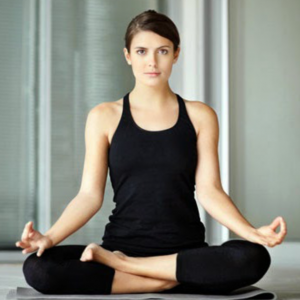
Also known as the half lotus pose, as opposed to both legs being crossed, this position needs only one leg to be put over the opposite thigh. Once beginners are more confident, they can shift to the Padmasana position.
In Ardha Padmasana, the meaning of “Ardha” is one part or half, “The Padma” means the Lotus and the Asana stands for the seat, pose, or posture. Ardha Padmasana is the variation of the originally seated posture (Lotus Pose or Padmasana in Sanskrit).
Ardha Padmasana is more comfortable for those people who have less flexibility in their lower body and also for those who are uncomfortable doing the full Padmasana (Traditional Lotus Pose). Half Lotus pose is also good for learners who are new to Yoga. Ardha Padmasana or Half Lotus pose is used as a prayer pose the same as Padmasana.
How to do Ardha Padmasana (Half Lotus Pose)?
- First, take the pose of Dandasana (Staff Pose) with straight legs in front of you and keep your spine straight.
- Now, flex your left knee and place your left heel in the direction of your groin, by this number 4 – shape is formed with the combination of your left and right legs.
- At that time, you have to keep the leg relaxed and not push your knee towards the floor for a deep stretch.
- Now, you have to fold (bend) your right knee, at that time your both legs are in the crossing position. Keep your right ankle on the top of your left butt crease. Keep your right foot sole pointing towards the roof.
- After that, you have to place your hands on both knees. Remember one thing; during the position keep your spine straight along with keeping your head erect.
- Note that, during the whole sequence keep your face muscles relaxed and close your eyes or you can set your look to a particular point present in front of you.
- Remain in the position for about 1 minute or up to one minute or for the period of your Meditation practice (during this, breathe deeply). return to the Staff Pose and repeat with the right leg.
- For discharging, extend your both legs towards the floor and sit in the staff pose.
- Follow the same sequence with your other leg on top.
- After doing the pose with your both legs, rest in the Savasana (Corpse Pose) for 3 to 5 minutes.
Benefits of Ardha Padmasana (Half Lotus Pose):
- Ardha Padmasana strengthens and stretches your ankles, knees, and inner thighs.
- Best for those people who find difficulties (bend their legs) to do Padmasana.
- It relaxes your mind and your body.
- Good position for meditation & Pranayama also.
- Half lotus pose gives relaxation to sciatica and menstrual pain.
Baddha Padmasana/bound lotus
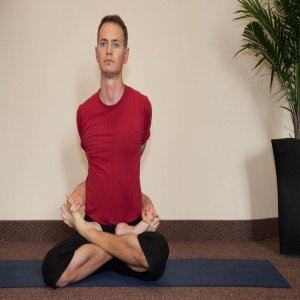
Baddha padmasana is a challenging and progressed variation of padmasana (lotus pose) that opens the heart, improves vitality and energy, and offers several other advantages to the body and mind. The name derived from the Sanskrit, bandha, represents “binding” or “bound”; the Padma, which defines “lotus”; and asana, means “pose.”
A more complex and advanced form of the Padmasana pose, this position converts to a locked lotus position. Here, your legs are in the full lotus position, and then you reach both of your hands around your back to hold the opposite foot. Only after you gain mastery of the Padmasana position, you can proceed to perform this position.
To do this asana, the practitioner starts in the lotus pose. The hands are crossed on your back to grab the big toes of the opposite feet. In more advanced variations, the body is flexed forward.
The English name for baddha padmasana is bound lotus pose or closed lotus position.
How to do Baddha Padmasana (Locked Lotus Pose)?
- Sit in the Padmasana (Lotus Pose), and place your feet high on your thighs, just near the groin.
- Place your left arm behind your back and reach around till your left hand is close to the right hip.
- Now bow forward a little; twist your trunk to your left side and try to grasp the left thumb of the toe, resting on the right thigh firmly with the index finger and the middle finger.
- Sit straight and remain in the pose for a few seconds.
- Equivalently, place your right arm behind your back; cross your left arm, and try to reach around till your right hand is close to your left hip.
- Now bend forward a little. Twist your torso to the right and bring your shoulder blades together, try to grasp the right thumb of the toe, resting on the left thigh firmly with the forefinger and the middle finger.
- Sit straight and remain in the pose for a few seconds.
- Now your legs and arms are tightly locked.
- Try to keep your head, neck, and spine elongated.
- Your knees should press on the floor.
- Gaze straight forward and breathe normally.
- It is the final pose of Baddha Padmasana.
- Try to hold this position for about ten seconds or as long as you can.
- Now free your hands and open the foot lock and come back to the starting position.
- Repeat the same steps with your alternate legs and hands also.
Benefits of Baddha Padmasana (Locked Lotus Pose):
- Make the legs flexible.
- It stretches the joints of shoulders, elbows, wrists, back, hips, knees, and ankles and makes them more flexible.
- Advantageous in the shoulders and back pain.
- It improves the posture of the spine.
- It improves the range of shoulder movements.
- It is advantageous in constipation and improves the functions of the digestive system.
- Regular practice of this Asana is beneficial in Arthritis.
- Helps to make your spine erect.
Yogamudrasana/psychic union pose
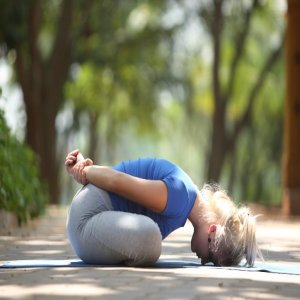
Mudra in Sanskrit means ‘seal’ and Asana means ‘posture’. Mudrasana is a symbolic connotation that describes the ‘seal of awareness’ and hence it is often called Yoga Seal Pose. It is believed that this yogasana activates that psychic energy points and channelizes the flow of psychic energies into the body and hence the name ‘Psychic Union Pose’.
Yoga Mudrasana is an anti-aging asana done by those who wish to retain their youthfulness and limberness into their upcoming age. This asana also gives spiritual awareness by focusing on the Solar Plexus Chakra or Manipur Chakra and activates kundalini.
The practitioner flexes forward in full lotus, bringing the forehead as close to the ground as possible. How to do Yoga Mudrasana (Psychic Union Pose)?
Yoga Mudrasana steps involve preparatory poses, step-by-step procedures, follow-up poses, and advanced pose considerations. Some of the preparatory poses to do before Mudrasana are –
- Dandasana
- Sukhasana
- Ustrasana
- Padmasana
- Matsyasana
- Siddhasana
- Bhujangasana
How to do yoga Mudrasana?
- Place your body in Padmasana, the lotus pose.
- Breathe normally and close your eyes.
- Draw the hands behind the back and hold the right wrist with the left hand.
- Slowly fold forward and try to touch the ground in front of you with the forehead or the nose.
- There is another advanced variation of Yoga Mudrasana. In this variation, the hands are crossed over behind the back and you need to grab the left foot with your left hand and the right foot with the right hand.
- While flexing forward, exhale. If you cannot touch the ground, go as far as it is comfortable.
- Once you are in the final pose, relax the entire body, especially the back and the shoulders.
- Breathe steadily and deeply. keep the position for a few minutes.
- Slowly return to the beginning position. Inhale while returning to the beginning pose.
- You can either try to keep the final position for quite some time or repeat the process a few more times.
Benefits of Yogamudra:
- Stretches the back muscles of the trunk and the neck.
- Increases muscle tone and venous circulation of the spinal column.
- Beneficial effects on the viscera due to deep intra-abdominal compression.
- Lateral stretch activates vital areas of the colon.
- Acceleration of the venous flow from the sex organs has a beneficial effect.
- The contraction of the diaphragm and the abdominal walls provide massage to the abdominal contents useful in gastric conditions.
- Ascending and descending colon gets better pressure thereby alleviating constipation.
- Aids prevent sagging of the uterus and postnatal laxities.
- Lumbar pain is reduced.
- Overall, enhances the health of the abdomen and pelvic organs due to better blood circulation and drainage.
What are the follow-up positions after Lotus Position?
Since we sit crossed-legged in padmasana, the blood flow to our legs gets constricted. Therefore, we must follow up padmasana with poses that raise blood flow to the legs.
Savasana:– After practicing padmasana as a pranayama pose, you can lie down flat on the mat in savasana or the corpse pose to relax your body.
Paschimottanasana:- This pose includes stretching your legs in front of you and bending the body to move your chest above the things. It relaxes the spine and raises blood flow towards the legs.
What are the contraindications and precautions to take while doing the Padmasana (Lotus Position)
Before practicing Padmasana, it is important to take into account the following examination:
- Padmasana is a meditative pose that is ideally performed during the morning as it helps refresh the mind and body. That being said, it can also be done in the evening.
- It is best to do Padmasana on an empty stomach. However, if you plan to perform it as part of a string of different exercises, it is best done following 4 to 5 hours of having eaten.
- Because Padmasana is in a meditative position, it should ideally be done in a calm and peaceful place where there is less distraction and noise.
- Do not perform Padmasana if you are tolerating any knee, ankle, calf, or spinal injury.
- Always practice some stretches for your legs and spine before doing Padmasana.
- If tolerating sciatica infections or weakness in the sciatic nerves, don’t perform it.
What are the disadvantages of doing this yoga?
Even though padmasana has so many health benefits, it also has some disadvantages:
- It can limit blood flow to your legs if you hold long position.
- If performed without a warmup, padmasana can cause a sprain in the legs.
- The incorrect padmasana pose may cause hip or knee injury.

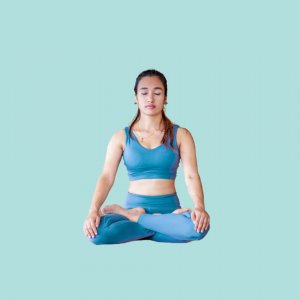
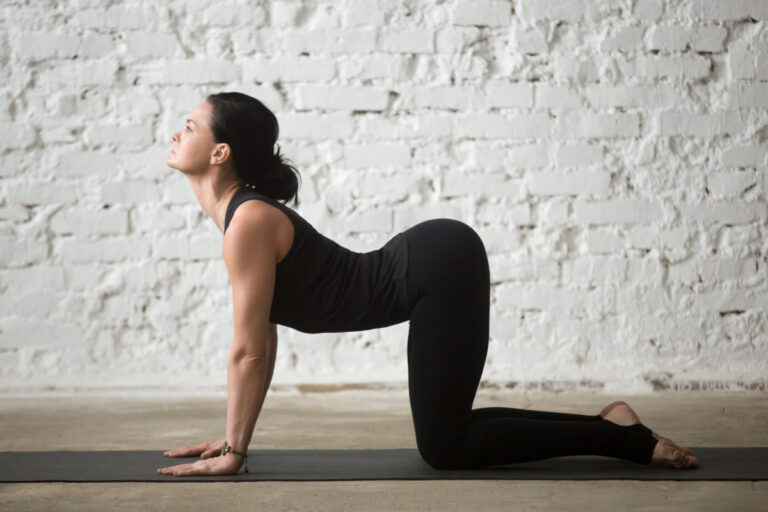
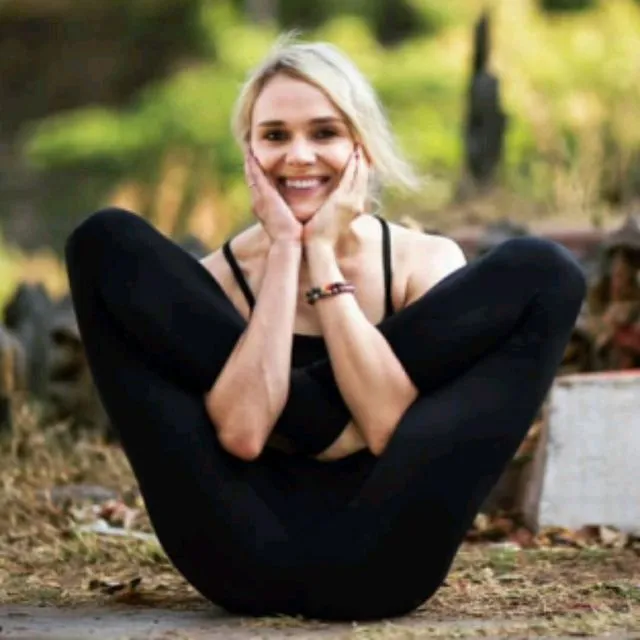


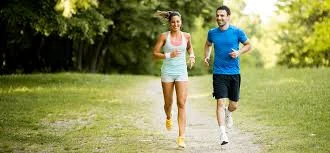
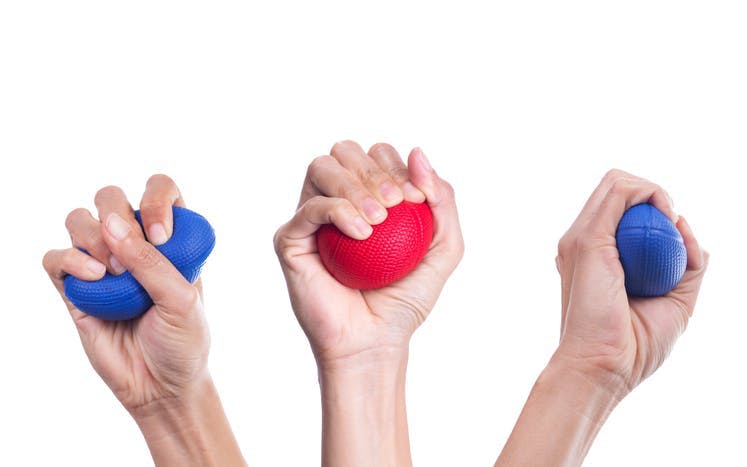
3 Comments